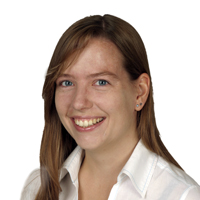Welcome to the nineteenth issue of Science in School Editorial article

Photolab
Recently, astronomers have found a planet orbiting a star that entered the Milky Way from another galaxy. Does that whet your appetite for space travel? Why not discuss what we would need to live on another planetary body and get your students to design a space habitat?
One of the many considerations for this activity is cosmic radiation – high-energy particles that fall on Earth and other planets from space. One type of particle produced by cosmic rays is the neutrino; as Susana Cebrián explains, thousands of them pass through your body in the time it takes you to read these lines.
Whereas huge detectors are necessary to find neutrinos, UK physics teacher Becky Parker and her students use tiny detectors to find other cosmic particles – doing real science at school, with help from CERN. Learn more about the project and how to join here.
Another inspiring science teacher, Bernhard Sturm, introduced his students to the chemistry of amber. This fossilised resin is also analysed by palaeontologists at the European Synchrotron Radiation Facility, where their chemist colleagues have recently revealed why the famously bright yellows of van Gogh’s paintings are darkening over time. The culprit is thought to be a chemical reaction initiated by light.
Reverse this process and, as Emma Welsh explains, the result is chemiluminescence: the production of light from a chemical reaction. One of the applications of chemiluminescence is the detection of blood at crime scenes using luminol. Forensic scientists, however, perform not only chemical but also genetic analyses, such as DNA fingerprinting. Using this method, your students can solve a murder mystery in the Gene Jury team’s DNA detective game.
If that sounds too lurid, you may prefer the Moja Island role play, to determine the best sustainable energy solutions for fictitious island communities.
Is background reading what you are looking for, rather than games? Then you may be interested in Laurence Reed and Jackie de Belleroche’s report on the latest research into schizophrenia, Andrew Wildes’ description of his life as a neutron scientist at the Institut Laue-Langevin, or one of the book or website reviews by our readers. You can find all these articles and more here, on the Science in School website.





